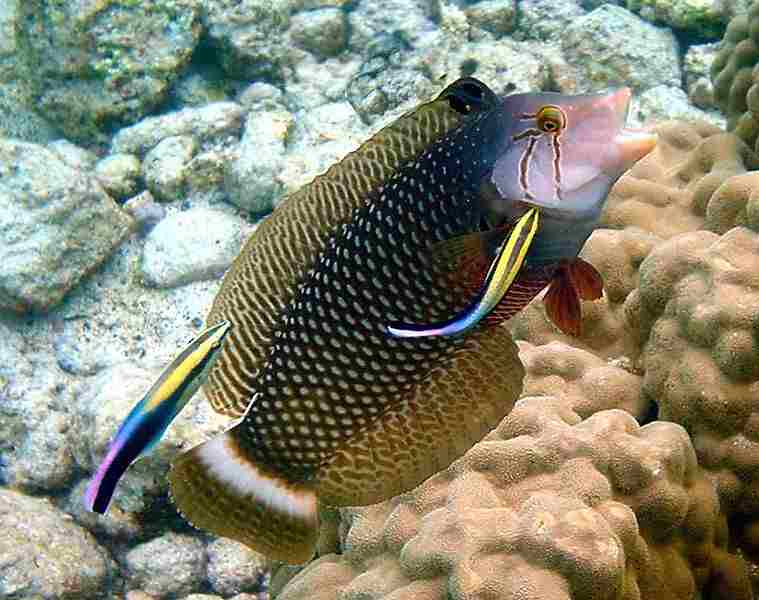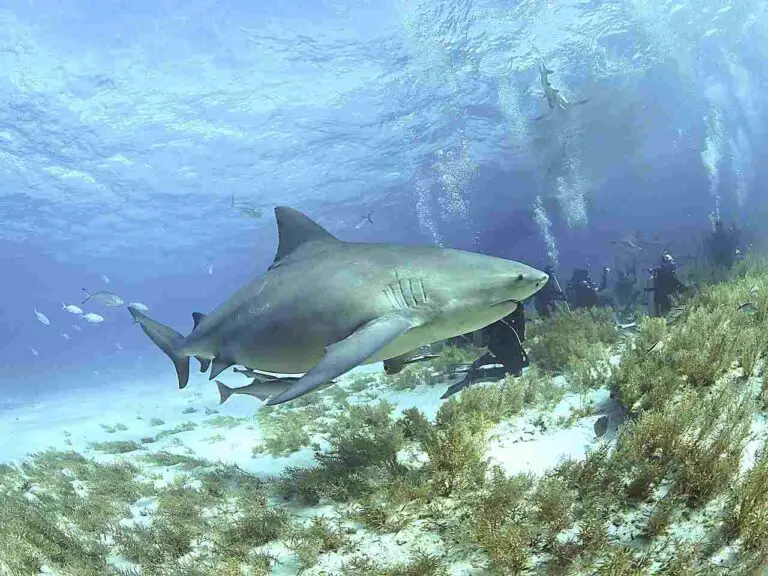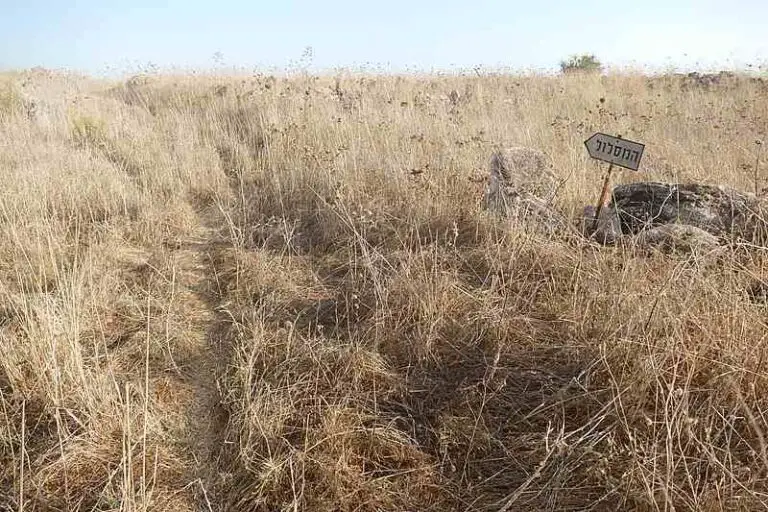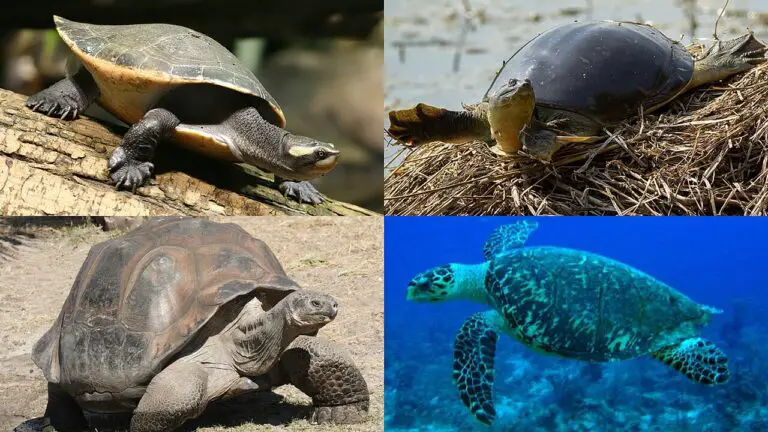15 Biotic Factors in a Lake Ecosystem and Their Characteristics
Biotic factors in a lake are; autotrophs, herbivores, carnivores, omnivores, decomposers, mutualism, commensalism, parasitism, predation, competition, adaptation, reproduction, feeding, and biodegradation.
This article discusses the biotic factors in a lake ecosystem and their characteristics, as follows;
1). Lake Autotrophs (as one of the Biotic Factors in a Lake Ecosystem)
Autotrophs in a lake ecosystem, are a group of organisms that are capable of producing their own food from inorganic materials (abiotic factors) through photosynthesis. These organisms, by their activities, serve as a link between biotic and abiotic factors in lakes and other aquatic ecosystems.
Lake autotrophs play an important role in establishing and maintaining sustainability, within their environment.
This is because they serve as the primary producers, and utilize solar radiation as a natural energy resource for the synthesis of biomass (organic compounds) and chemical energy [10].
Examples of Autotrophs/Primary Producers in a Lake Ecosystem
Examples of autotrophs in lake ecosystems include;
1. Phytoplankton (microalgae)
2. Macroalgae
3. Vascular aquatic plants
Roles and Importance of Autotrophs as Biotic Factors in a Lake Ecosystem
The roles and importance of lake autotrophs include; oxygen cycling/production, food provision, nutrient cycling, microhabitat creation, and water quality conservation.
*Oxygen Cycling/Production
Autotrophs in a lake ecosystem, release oxygen as a byproduct in the process of photosynthesis, thereby aiding the survival of aerobic-aquatic animals like invertebrates and fish.
*Food Provision by Lake Autotrophs
Lake autotrophs make-up the foundation or basal level of the food chain in their habitat, serving as a means of sustenance for herbivores (primary consumers), which are in turn a source of food to higher (secondary, tertiary) consumers.
*Nutrient Cycling
In the course of their photosynthetic activities, lake autotrophs assimilate nutrients like nitrogen, phosphorus and carbon, from the water.
After their death and decomposition, these assimilated nutrients are released back into the ecosystem for the benefit other organisms, in an efficient process of natural recycling.
*Microhabitat/Shelter Creation
Aquatic plants are a typical example of lake autotrophs that create essential microhabitats that shelter various aquatic species, including juveniles, small fish, and several invertebrates [3].
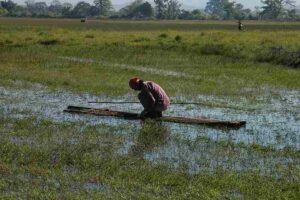
*Water Quality Maintenance/Conservation
Autotrophs in lakes and ponds among other freshwater habitats; play a role in the maintenance of water quality and clarity, by mitigating excessively-high nutrient concentrations through nutrient uptake.
They may also act as vegetative filters that intercept and remove suspended foreign materials from the water column.
2). Lake Herbivores
Herbivores in lake ecosystems are primary consumers that rely on autotrophic organisms like aquatic (vascular and non-vascular) plants, and phytoplankton as a source of nutrients and bioenergy for survival.
They are important to the aquatic food chain as primary consumers, serving as an energy bridge between autotrophs and non-herbivorous consumers in higher trophic levels.
Examples of Lake Herbivores
Examples of herbivores in lake ecosystems are;
1. Zooplankton (like small crustaceans and insect larvae - which consume phytoplankton)
2. Some fish species including freshwater cichlids, rudd (Scardinius erythrophthalmus), and roach (Rutilus rutilus) [12]

Roles and Importance of Herbivores as Biotic Factors in a Lake Ecosystem
The roles and importance of herbivores in a lake ecosystem include; energy transfer, population regulation, nutrient cycling, food provision, and contribution to species richness/diversity.
*Energy Transfer
Herbivores feed on autotrophs, and transform the stored energy in these algae/plants into biomass in their own bodies.
The same energy is subsequently transferred to more-advanced consumers in higher trophic levels, to which the herbivores are prey.
*Population Regulation
Herbivores help regulate or control the sizes of autotroph populations in the lake ecosystem.
By grazing on aquatic plants and consuming algae, herbivores prevent overgrowth, which could have negative impacts like reduced water quality and nutrient imbalances.
*Nutrient Cycling
As herbivores consume algae and plants, they assimilate nutrients which are later released back into the water column, through biodegradation and excretion. These processes contribute to the recycling of such essential nutrients within the ecosystem.
*Food Provision by Lake Herbivores
Herbivores serve as an important food source for consumers in higher trophic levels of the food chain/energy pyramid, such as predatory fish, mammals and aquatic.
Their role as a food source contributes to the sustenance of ecologic balance and complexity.
*Species Richness/Biodiversity Support
Herbivores contribute to the establishment and maintenance of biodiversity in lakes by their presence, which influences the distribution, adaptation and species composition of algae and aquatic plants which they consume, while also impacting other organic groups that depend on them for continuous energy transfer.
3). Lake Carnivores (as one of the Biotic Factors in a Lake Ecosystem)
Carnivores in the lake ecosystem are consumers that feed mainly on other lake animals.
They are important as predators in the ecosystem, because of their involvement in regulating prey populations, as well as influencing the ecological balance of the food chain/web.
Examples of Lake Carnivores
Examples of carnivores in the lake ecosystems are;
1. Aquatic birds like kingfisher and heron
2. Predatory fish like pike and bass
3. Reptiles like alligator and crocodile
4. Invertebrates like dragonfly nymph [2]

Roles and Importance of Lake Carnivores
The roles and importance of lake carnivores include; prey population-control, trophic cascade effect/influence, facilitation of energy transfer, contribution to biodiversity, and nutrient cycling.
*Prey Population-Control
Carnivores in the lake ecosystem help regulate the abundance of their prey species through their feeding activities.
This prevents overpopulation and maintains the diversity of organic communities, in the ecosystem.
*Trophic Cascade Effects/Influence
The presence and activities of carnivores in high trophic levels of the food chain, can trigger cascading effects throughout the lake ecosystem [4].
For example, the removal of a given predator can result in an increase in the populations/abundance of its prey, which may in turn lead to a decline in the abundance of lower-level consumers and-or autotrophs (which these prey species feed on), thereby affecting the entire community.
*Facilitation of Energy Transfer
Carnivores transfer the energy stored in their prey, higher up the food chain and into their own trophic level, through predation, food consumption and assimilation.
This energy (and nutrients) is used to support their own growth, general metabolism and reproduction.
Energy flow is what sustains the entire food chain, and the predatory role of carnivores allows for efficient energy transfer from lower to higher trophic levels.
*Contribution to Biodiversity
Carnivores contribute to the establishment and sustenance of biodiversity, by controlling the population sizes of prey, and preventing unfavorable population explosions among prey species.
*Nutrient Cycling as a Function of Lake Carnivores
Lake carnivores play a role in the cycling of nutrients within their habitat, by releasing these nutrients though excretion and biodegradation (of their waste and body-remains), back into the ecosystem. This ensures the continued sustainability and health of the lake biome.
4). Lake Omnivores
Omnivores in the lake ecosystem are consumers that have a diverse, flexible diet, and can feed on both plant and animal materials.
They have a significant role to play as versatile and adaptive consumers, so that they contribute to the functioning and stability of the ecosystem as a whole. This role and contribution(s), are what qualify omnivores as biotic factors in a lake ecosystem.
Examples of Omnivores in a Lake Ecosystem
Examples of omnivores in lake ecosystems are;
1. Some fish species of like catfish and carp [14]
2. Crustaceans like crayfish
3. Reptiles like snapping turtle
4. Aquatic birds like moorhen [9]

Roles and Importance of Omnivores in the Lake Ecosystem
Roles and importance of lake omnivores include; contribution to ecologic resilience, energy transfer, facilitation of trophic linkage, nutrient cycling, and population control.
*Contribution to Ecologic Resilience
Omnivores are capable of adapting their diet based on the availability of food resources in their habitat [1]. This dietary flexibility enables them to thrive even when several food sources are limited.
The largescale effect is an increase in the ecologic resilience of the entire lake ecosystem, as a result of consistency in the population size and ecologic contribution of these organisms under diverse conditions of constraint.
*Energy Transfer by Lake Omnivores
As consumers of both animal and plants biomass, omnivores facilitate the process of energy transfer between various trophic levels in the food web.
They are capable of directly utilizing primary producers (plants) as food sources like herbivores, and can also consume animal proteins. The energy and nutrients derived are then transferred to support their own reproduction and growth.
*Facilitation of Trophic Linkage
Omnivores help establish trophic linkages between various biotic factors in a lake ecosystem.
They bridge the energy gap between primary producers and higher-level (predatory) consumers, and thereby contribute to the maintenance of ecosystem balance.
*Nutrient Cycling
Omnivores contribute to the cycling of nutrients in their habitat, by consuming both animal and plant matter.
Through their feeding habits, subsequent excretion, and decomposition; they release essential nutrients back into the environment.
*Population Control by Lake Omnivores
By consuming of both plant and animal materials, omnivores can help regulate the abundance of various species (which are their food sources) in the ecosystem.
They can regulate both prey and autotrophic populations, and contribute to maintaining biodiversity and preventing overpopulation of such species.
Scavenging and Predation by Lake Omnivores
Some lake omnivores may also act as predators, by feeding on smaller organisms.
At the same time, they may function as scavengers, feeding on detrital organic matter, and helping to remove such materials from the environment.
5). Lake Decomposers (as one of the Biotic Factors in a Lake Ecosystem)
Decomposers in lake ecosystems are mostly microorganisms, such as fungi and bacteria.
They play a crucial role in breaking down dead organic matter, recycling nutrients, and maintaining the overall health of the ecosystem.
Examples and Roles of Decomposers in the Lake Ecosystem
Examples of decomposers in the lake ecosystem are bacterial decomposers, and fungal decomposers respectively.
Bacteria are arguably the most prominent decomposers in lake ecosystems, in terms of abundance, distribution, and effectiveness.
They break down organic materials like dead plant-and-animal remains, as well as algal matter, into simpler products.
Fungi serve as complementary decomposers that support bacteria by breaking down highly-complex organic compounds like lignin [8], which are often resistant to bacterial mechanisms of degradation.
Importance of Decomposers as Biotic Factors in a Lake Ecosystem
The importance of decomposers as biotic factors in lake ecosystems, can be assessed on the basis of their contribution to nutrient recycling, detoxification, organic decomposition, biodiversity, and energy flow. Each of these areas is discussed briefly below;
*Nutrient Recycling by Lake Decomposers
Decomposers release essential elements like phosphorus, carbon and nitrogen from decaying organic matter, back into the water column.
This makes the nutrients available for primary producers like aquatic plants and algae, which serve as food sources for other organisms.
*Detoxification by Decomposers in Lakes
By facilitating organic matter-degradation, decomposers help breakdown potentially harmful substances including anthropogenic pollutants like pesticides.
This reduces their potential ecologic/environmental impacts within the ecosystem.
*Contribution of Lake Decomposers to Organic Matter Breakdown
Decomposers help to prevent the accumulation of organic materials, which could lead to water quality degradation, oxygen depletion and loss of aquatic biodiversity.
*Lake Decomposers as Contributors to Biodiversity
Through their ecological service of recycling nutrients, decomposers contribute to the growth and sustenance, of diversity of species which make up the lake ecosystem.
*Energy Flow-Facilitation by Lake Decomposers
Decomposers have a play crucial role to play in releasing stored energy from organic matter during the process of decomposition, thereby supporting the energy flow dynamic of the food chain.
Trophic Relationships and Biological Processes as Biotic Factors in a Lake Ecosystem
Asides the main organic groups, trophic relationships and biological processes can also be classified as biotic factors in a lake ecosystem. Some of them are discussed below;
6). Mutualism
Mutualism in lake ecosystems is a symbiotic relationship in which two different species benefit from their biological association.
This cooperative interaction is useful to overall ecological balance, and contributes to the functionality as well as health, of the ecosystem.
Example(s) of Mutualism in the Lake Ecosystem
An example of mutualism in a lake ecosystem is the relationship which exists between certain fish species, and cleaner fish.
Cleaner fish include cleaner wrasses, which have evolved specialized adaptive behaviors to remove dead epidermal cells, and parasites, from the bodies of other fish [6].
In this mutualistic relationship, the cleaner fish benefit by gaining food and nutrients from their host, while the client fish benefit by getting rid of their own harmful parasites, which improves their survival and health.

Functions/Importance of Mutualistic Relations as Biotic Factors in a Lake Ecosystem
Mutualistic relationships in lake ecosystems are helpful in diverse ways, including; parasite control, facilitation of ecologic stability, nutrient cycling, and contribution to biodiversity.
Cleaner fish help in the reduction of parasites on other aquatic organisms, and promote their well-being while preventing disease outbreaks in the lake ecosystem
Mutualistic relationships in lakes, facilitate the establishment of ecologic stability and resilience, in the ecosystem, by promoting the survival and coexistence of different species.
Certain mutualistic relations, aid in nutrient-cycling, and improve the efficiency of nutrient assimilation/release; within the ecosystem.
Lastly, mutualism fosters species richness and diversity in the ecosystem, thereby supporting overall ecosystem health.
7). Commensalism (as one of the Biotic Factors in a Lake Ecosystem)
Commensalism in lake ecosystems, is a symbiotic relationship in which one species benefits from the association, while the other neither benefits nor is harmed [11].
This type of trophic interaction is common in nature compared to other types, and has multiple ecological implications.
Example(s) of Commensalism in a Lake Ecosystem
A classic example of commensalism in a lake ecosystem, is the relationship that exists between certain species of fish, and aquatic birds.
Some fish species, such as tilapia, create mechanical disturbances in the water, while swimming or feeding, which stirs up small organisms like crustaceans and insects.
Aquatic birds like egrets, often take advantage of this disturbance and stirring, by following the fish and catching the disturbed prey, without directly affecting the fish's survival, ecological wellbeing, or behavior.
Roles and Importance of Commensalism in Lakes
The roles and importance of commensalism in lake ecosystems, include feeding opportunities, energy transfer facilitation, habitat resource-optimization, and biodiversity sustenance.
Commensal interactions between lake organisms, provide additional feeding opportunities for some of the involved species, thereby helping in the maintenance of population dynamics, and promoting the survival of such species.
Species diversity also benefits from commensalism in the lake ecosystem, with increase in overall ecological complexity, and resilience.
Commensal relationships can facilitate habitat/energy sharing and conservative consumption, thereby optimizing the manner in which resources are utilized in the ecosystem.
Lastly, by utilizing resources that are made available by some species without harming them, commensals participate in the transfer of energy within the food chain, thereby supporting trophic relationships.
8). Parasitism
Parasitism in lake ecosystems is a type of trophic relationship where one organism (the parasite) benefits from the association, often at the expense of another (the host).
This interaction is fairly common, and can significantly influence the dynamics and health of the ecosystem.
Examples and Roles of Parasitism in Lakes
Examples of parasitism in the lake ecosystem include the presence of flukes in fish [7], and microbial parasites in zooplankton.
Several species of fish in lakes harbor parasites like flukes.
These parasites attach themselves to the body of the host, feeding on their body fluids and tissues, which can affect the host's behavior and overall health.
Zooplankton, which are small heterotrophic organisms that drift in lake water, can also be hosts to various parasites, which can affect the zooplankton's survival, reproductive success and ecological abundance, impacting their population structure and size.
Importance of Parasitism in Lake Ecosystems
The importance of parasitism in lakes can be assessed in terms of its influence on biodiversity, control of host populations, and general trophic dynamics.
Parasitism is a crucial factor that contributes to the diversity of species in the lake ecosystem.
This is because parasites usually specialize in exploiting specific host species [5], and exert significant influence over the distribution and abundance of such species (and others that are linked ecologically to them) in the ecosystem.
As earlier stated, parasites in lakes influence the abundance and distribution of host populations in the ecosystem.
By influencing host populations, parasites also indirectly affect other trophic levels, and contribute to dynamic processes that maintain ecosystem balance.
Lastly, parasites contribute to the transfer of energy and nutrients through the lake ecosystem, by consuming the tissues of hosts, and influencing the rate of metabolic processes like feeding, respiration, as well as microbial decomposition.
Although parasitism may be detrimental to the host, it is an essential biotic component of lake ecosystems, and contributes to both their functionality and their complexity.
Balancing parasitic relationships (including mitigating excessive proliferation of parasites) is important for maintaining the stability and health of the entire ecosystem.
9). Predation (as one of the Biotic Factors in a Lake Ecosystem)
Predation in lake ecosystems, is a biological interaction that involves the consumption of one organism (the prey) by another (the predator).
This interaction is very critical for regulating population sizes of some organic groups, and maintaining ecological balance at all times, within the ecosystem.
Examples and Roles of Predation in Lakes
Examples of predation in lakes include the dynamic relationship between carnivorous fish and zooplankton; as well as that between dragonfly nymphs and smaller invertebrates.
Several species of fish in the lake ecosystem are predatory in nature, and may feed on zooplankton (like small crustaceans) as well as smaller fish.
Predatory fish help control prey populations and prevent overpopulation.
Aquatic insects like water bugs and dragonfly nymphs, are known to prey on smaller invertebrates including insect-larvae, matured insects, and in some cases; small fish.
Like other predators they help control prey populations, and in turn serve as a source of food for higher predatory consumers.
Importance of Predation as one of the Biotic Factors in a Lake Ecosystem
The importance of predation in a lake ecosystem can be analyzed in terns of energy flow, trophic top-down influence, and biodiversity.
Predators convert the energy from biomass in their prey, into their own energy and biomass, thereby causing energy to be effectively transferred through the food chain, and supporting organisms in higher trophic levels.
The process of predation, leads to regulation of population sizes, of different organisms in various trophic levels.
This supports habitat and energy conservation, while sustaining the lake ecosystem by preventing any single species from becoming numerically dominant and causing population imbalance as well as resource depletion.
Predation influences the diversity of species, by promoting coexistence, and preventing unsustainable population growth or numerical dominance, of any single species. The ultimate outcome is a healthier, more diverse ans sustainable ecosystem.
10). Competition
Competition in lake ecosystems can be described as the active struggle between organisms for limited resources, like mates, space, and food.
It can occur both within and between species (that is; intra and inter-species/specific competitions respectively). It also shapes the abundance, distribution and adaptation of all affected species.
Examples and Roles of Competition in a Lake Ecosystem
Examples of competition in a lake ecosystem include; intraspecific competition for breeding partners, and interspecific competition for food sources.
Intraspecific competition occurs within a species, as individuals compete for resources like breeding partners and suitable nesting sites. This type of competition can affect adaptive physiology, behavior(s), reproductive success, ans population dynamics.
Interspecific competition in lakes may be observed among different species of fish, which may compete for the same sources of food source, like algae, aquatic plants and zooplankton. This form of competition influences the ecological success of species, as well as their interactions and distribution.

Importance of Competition as one of the Biotic Factors in a Lake Ecosystem
The importance of competition in lakes can be assessed in terms of niche specification/differentiation, ecological balance, resource allocation, and species interactions.
Interspecific competition can result in niche differentiation or specification, where species adapt and evolve to occupy specific ecological niches, in order to increase their survival rate by reducing direct/excessive competition and promoting coexistence [15].
Competition is also a critical component of ecological balance in the lake ecosystem. This is because it prevents overallocation of resources and unfavorable dominance of a single species, and rather promotes organic biodiversity.
The utilization of limited resources is regulated and optimized through competition, which helps to ensure that these resources are distributed among species on the basis of their competitive capacity, needs, and ecological traits.
Lastly, the outcomes of competition often influence other ecological interactions of species within the ecosystem, such as mutualism and predation, creating complex ecological dynamics that are an essential aspect of sustainability.
11). Adaptation (as one of the Biotic Factors in a Lake Ecosystem)
Adaptation in lake ecosystems can be defined as the process by which organisms adjust and evolve in their physiological and behavioral traits, in order to survive and thrive within their aquatic habitat [13].
Such adaptations enable species to withstand diverse environmental constraints, while exploiting available resources efficiently.
Examples and Roles of Adaptation in the Lake Ecosystem
Examples of adaptation in the lake ecosystem include; physiological and behavioral adaptations in animals, as well as structural adaptations in plants and algae.
Physiological adaptation is behind the ability of some fish species to tolerate a broad range of water oxygen levels and temperature conditions. This ability allows them to occupy diverse microhabitats within the lake, and thrive under varying conditions.
On the other hand, behavioral adaptations in the lake ecosystem include the tendency of some aquatic birds to exhibit specialized feeding behaviors like diving and opportunistic capture of prey in disturbed water. Such learned habits enable them to efficiently obtain food and elude potential danger.
Structural adaptations can be observed in aquatic plants within the lake, that possess modified stems, leaves and roots, which are used for their anchorage, and to efficiently absorb nutrients from the water and sediments.
Importance of Organic Adaptation as a Biotic Factor in the Lake Biome
The importance of adaptation as one of the biotic factors in a lake ecosystem, can be assessed in terms of its contribution to organic reproduction and survival, niche differentiation, biodiversity, and ecosystem stability.
Adaptations are important for the successful reproduction, and survival of species in their specific lake habitats, and contributes to the persistence of several aquatic populations, especially with unfavorable environmental impacts (of human activity) like climate change, ocean acidification and global warming.
Another area where adaptation plays an important role, is in niche differentiation, as it allows different lake species to occupy specific micro-niches, in order to reduce the intensity of competition and promote survival.
Adapted species are behind the resilience and stability of the lake ecosystem, because they efficiently utilize the available resources, and respond in a flexible manner to environmental changes.
Lastly, adaptations ultimately result in a diverse array of species, which enhances overall biodiversity in the lake ecosystem.
12). Reproduction
Reproduction in lake ecosystems is an essential biological process that involves the production of offspring to sustain species' populations.
Different aquatic organisms have evolved diverse reproductive strategies to ensure successful breeding and the survival of their young.
Examples and Roles of Reproduction in a Lake Ecosystem
Reproduction in a lake ecosystem may be oviparous or viviparous, and could be followed by a relatively-simple of multi-stage process of development.
Oviparous reproduction occurs in organisms like amphibians, fish,, and several aquatic invertebrates which lay eggs in the water. The eggs are externally fertilized, and the young hatch and develop within the aquatic environment.
Viviparous reproduction is typical of aquatic mammals that produce live young after a process of internal fertilization. This form of reproduction often provides the offspring with better protection in the early stages of life.
Several aquatic organisms also undergo larval stages of development, that enable them to disperse, and find suitable micro-habitats, and/or mature effectively before settling into their adult form.
Importance of Reproduction as one of the Biotic Factors in a Lake Ecosystem
1. Reproduction ensures the continuity of various species populations, in lake habitats and prevents both extinction and detrimental levels of population-decline
2. The presence of different reproductive strategies, helps to establish a diverse array of species in lakes, contributing to biodiversity and species richness
3. Successful reproduction also influences the abundance of different organic groups, including autotrophs, herbivores, decomposers and predatory organisms in the food chain, thereby playing a role in the maintenance of ecological stability
4. Reproduction is involved in nutrient cycling, as new offspring contribute to the balance and dynamics of the nutrient pool
5. Natural selection, evolution and adaptation all work with reproduction, which enables organisms to pass on beneficial, acquired traits to their offspring
13). Respiration (as one of the Biotic Factors in a Lake Ecosystem)
Respiration in lake ecosystems is the exchange of gases, especially oxygen and carbon dioxide, between organisms and the surrounding water/ambient medium [16].
Aquatic organisms have adapted diverse respiratory mechanisms to efficiently obtain oxygen and release carbon dioxide.
Examples and Roles of Respiration in Lakes
The mechanism and complexity of respiration in lake ecosystems differ from one organic group to another.
In aquatic animals like fish and amphibians, respiration involves extracting dissolved oxygen from the water column through gills or cutaneous layers to support metabolism.
For algae and aquatic plants like submerged macrophytes, the respiratory process can be said to include photosynthesis during the day, which leads to the release of oxygen into the water.
Importance of Respiration in the Lake Ecosystem
1. Respiration helps supply sufficient oxygen for aerobic organisms in the lake ecosystem, enabling them to acquire energy for essential metabolic processes.
2. The carbon cycle is also helped by respiration, which contributes to the balance of carbon dioxide levels in the water column, and prevents excessive accumulation that could lead to acidification and pose a threat to aquatic life
3. Energy obtained as a result of respiration, fuels important processes like reproduction, growth, and general activities of lake organisms, so that it sustains the overall function of the ecosystem
4. Availability of oxygen affects the distribution and adaptation of organisms, and influences both the effectiveness of trophic relationships and the overall structure of the aquatic community
5. Respiration sustains decomposers, like fungi and bacteria in the lake, thereby playing a role in nutrient cycling through the activities of these organisms
14). Feeding
Feeding in lake ecosystems is simply the consumption of various food sources by organisms, to obtain nutrients and energy for survival and growth. There are diverse feeding interactions and strategies that exist among organisms in the lake food chain
Examples and Roles of Feeding in Lake Ecosystems
Examples of feeding in lakes include autotrophic, herbivorous, carnivorous and omnivorous feeding patterns, which are discussed earlier in this article.
Herbivores organisms like some fish species, insects and zooplankton, consume primary producers (algae and aquatic plants) to obtain nutrients and energy.
Carnivores in lakes include amphibians and predatory fish, as well as some invertebrates that feed on smaller organisms to meet their own nutritional needs.
Omnivorous feeders in lakes include some crustaceans and fish, that consume both plant and animal materials, and have a diverse diet.
Lastly, bacteria and fungi are decomposers that break down organic matter, absorbing and recycling nutrients in the process.
Importance of Feeding as one of the Biotic Factors in a Lake
Feeding is an important biological process in lakes and other aquatic habitats, because it contributes to;
1.Trophic structuring/cascading
2. Energy transfer
3. Population regulation
4. Nutrient cycling
5. Sustenance of biodiversity
6. Development of adaptive traits
15). Biodegradation (as one of the Biotic Factors in a Lake Ecosystem)
Biodegradation in lake ecosystems, is a biological process that involves the breakdown of organic matter by microorganisms like bacteria and fungi, as well as by detritivorous invertebrates.
These organisms help recycle nutrients and break down complex organic compounds into simpler products.
Examples and Roles of Biodegradation in Lakes
The main forms of biodegradation in lakes are; fungal, bacterial and detritivorous biodegradation. Most of these are discussed under lake decomposers, earlier in this article.
Importance of Biodegradation in Lake Ecosystems
The importance of biodegradation in lake ecosystems includes its contribution to;
1. Environmental detoxification
2. Nutrient cycling
3. Energy flow
4. Biodiversity sustenance
Conclusion
Biotic factors in a lake ecosystem are;
1. Lake Autotrophs
2. Lake Herbivores
3. Lake Carnivores
4. Lake Omnivores
5. Lake Decomposers
6. Mutualism
7. Commensalism
8. Parasitism
9. Predation
10. Competition
11. Adaptation
12. Reproduction
13. Respiration
14. Feeding
15. Biodegradation
References
1). Agrawal, A. A.; Klein, C. N. (2000). "What Omnivores Eat: Direct Effects of Induced Plant Resistance on Herbivores and Indirect Consequences for Diet Selection By Omnivores." Journal of Animal Ecology 69(3). Available at: https://doi.org/10.1046/j.1365-2656.2000.00416.x. (Accessed 22 July 2023).
2). Ajibade, A. O.; Ajani, E. K.; Omitoyin, B. O. (2017). "The predatory behaviour of nymphs of dragonfly (Africocypha varicolor) on fry of African mud catfish (Clarias gariepinus) and control by skunk weed (Petivera alliacea) root-extract in aquaculture." Fisheries and Aquaculture Journal 08(03). Available at: https://doi.org/10.4172/2150-3508.1000219. (Accessed 22 July 2023).
3). Ali, M. M.; Abdelmageed, A. A.; Heikal, M. (2007). "Impact of Aquatic Macrophyte for Invertebrate Diversity in Large Subtropical Reservoir." Limnologica - Ecology and Management of Inland Waters 37(2):155-169. Available at: https://doi.org/10.1016/j.limno.2006.12.001. (Accessed 22 July 2023).
4). Drenner, R. W.; Hambright, K. D. (2002). "Piscivores, Trophic Cascades, and Lake Management." The Scientific World Journal 2:284-307. Available at: https://doi.org/10.1100/tsw.2002.138. (Accessed 22 July 2023).
5). Forbes, M. R.; Morrill, A.; Schellinck, J. (2017). "Host species exploitation and discrimination by animal parasites." The Royal Society, Philosophical Transactions of The Royal Society B Biological Sciences 372(1719):20160090. Available at: https://doi.org/10.1098/rstb.2016.0090. (Accessed 22 July 2023).
6). Grutter, A. S. (1996). "Parasite removal rates by the cleaner wrasse Labroides dimidiatus." Mar. Ecol. Prog. Ser. 130, 61-70, Marine Ecology Progress Series 130(1-3):61-70. Available at: https://doi.org/10.3354/meps130061. (Accessed 22 July 2023).
7). Iyaji, F. O.; Eyo, J. (2009). "Parasites and their Freshwater Fish Host." Bio-Research 6(1). Available at: https://doi.org/10.4314/br.v6i1.28660. (Accessed 22 July 2023).
8). Janusz, G.; Pawlik, A.; Sulej, J.; Swiderska-Burek, U.; Jarosz-Wilkolazka, A.; Paszczynski, A. (2017). "Lignin degradation: microorganisms, enzymes involved, genomes analysis and evolution." FEMS Microbiol Rev. 2017 Nov 1;41(6):941-962. Available at: https://doi.org/10.1093/femsre/fux049. (Accessed 22 July 2023).
9). Lardjane-Harmiti, A.; Metna, F.; Boukhemza, M.; Merabet, S.; Houhamdi, M. (2015). "Variation in the diet of Common Moorhen Gallinula chloropus (Aves, Rallidae) at Lake Réghaïa, Algeria." Zoology and Ecology 25(3):1-8. Available at: https://doi.org/10.1080/21658005.2015.1046270. (Accessed 22 July 2023).
10). Ndebele-Murisa, M. R.; Frank, M. C.; Lincoln, R. (2012). "Phytoplankton biomass and primary production dynamics in Lake Kariba." Lakes & Reservoirs Research & Management 17(4):275-289. Available at: https://doi.org/10.1111/lre.12005. (Accessed 22 July 2023).
11). Overstreet, R.; Lotz, J. (2016). "Host–Symbiont Relationships: Understanding the Change from Guest to Pest." The Rasputin Effect: When Commensals and Symbionts Become Parasitic (pp.27-64). Available at: https://doi.org/10.1007/978-3-319-28170-4_2. (Accessed 22 July 2023).
12). Power, M. E. (1983). "Grazing responses of tropical freshwater fishes to different scales of variation in their food." Environ Biol Fish 9, 103–115 (1983). Available at: https://doi.org/10.1007/BF00690856. (Accessed 22 July 2023).
13). Richards, J. G. (2011). "Physiological, behavioral and biochemical adaptations of intertidal fishes to hypoxia." Journal of Experimental Biology 214(Pt 2):191-9. Available at: https://doi.org/10.1242/jeb.047951. (Accessed 22 July 2023).
14). Stancheva, M.; Merdzhanova, A.; Dobreva, D.; Makedonski, L. (2014). "Common Carp (Cyprinus caprio) and European Catfish (Sillurus glanis) from the Danube River as Sources of Fat Soluble Vitamins and Fatty Acids." Czech Journal of Food Sciences 32(1):16-24. Available at: https://doi.org/10.17221/31/2013-CJFS. (Accessed 22 July 2023).
15). Tang, J.; Zhou, S. (2011). "The importance of niche differentiation for coexistence on large scales." Journal of Theoretical Biology 273(1):32-6. Available at: https://doi.org/10.1016/j.jtbi.2010.12.025. (Accessed 22 July 2023).
16). Williams, P.; del Giorgio, P. A. (2005). "Respiration in Aquatic Ecosystems." Respiration in Aquatic Ecosystems (pp.1-17). Available at: https://doi.org/10.1093/acprof:oso/9780198527084.003.0001. (Accessed 22 July 2023).
